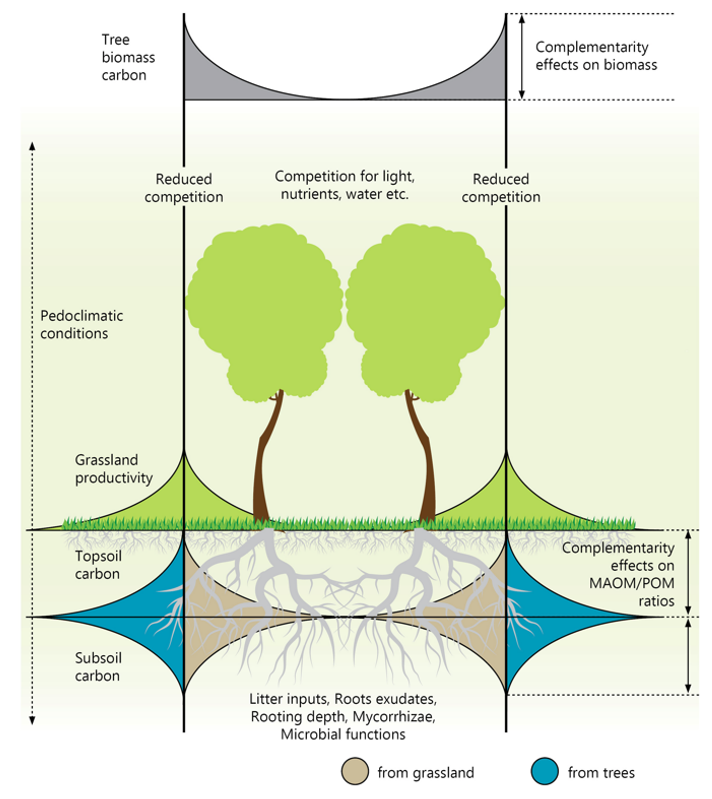Predicting carbon stock scenarios
In this section
Can edge effects lead to increased carbon stocks?
A major component of our research will be to investigate the processes that match the right tree with the right soil and climate conditions. We are also addressing the important question Can edge effects associated with establishment of isolated or small tree clusters in landscapes lead to increases in biomass and soil carbon stocks that exceed those for the same ground area of continuous plantation forest?
To address these questions, from four research sites that we identify for their contrasting soil and vegetation properties, we will take samples and use recent technological innovations in metagenomic methods to provide new insights into the role of soil microbes in ecosystem carbon cycling, then use the findings with models to predict the benefits and trade-offs from establishing tree clusters on biomass and soil carbon stocks. Our new approach will be to use observational data of changes in pedoclimatic variables, multi-dimensional plant traits, and high-resolution mapping of microbial genes across tree-grassland edges to inform controlled experiments aimed at identifying and understanding the drivers of critical thresholds where microbial regulation of soil organic carbon stocks.
Our hypothesis is that increases in biomass and soil carbon stocks at the edges of small tree clusters established in grassland will be attributable to increased ecosystem complementarity and stocks associated with edges can be enhanced by tailoring interventions to match plant and pedoclimatic properties, as illustrated in the diagram:

Fig. Conceptual representation of potential sources of complementarity for an equivalent area basis on biomass and soil carbon stocks associated with tree clusters. The coloured shapes indicate the effects of complementarity from the presence of trees on grassland and vice versa with maximum effects at the edges.
To interpret the impacts of edge effects on carbon dynamics, we will extend our plant-microbial interactions model FUN-CORPSE using the metagenomic data from experiments to simulate the effects of carbon demand and nutrient uptake associated with plant carbon inputs on microbial processes regulating soil carbon protection and turnover. We will develop one of the first models that explicitly links plants and microbes with the resulting impacts on soil organic carbon stocks. We will test the model and use it to predict changes in soil carbon stocks along the transects across tree edges. Later in the programme, the model will allow us to develop scenarios of the impacts of climate change on carbon stocks.
Follow us as our research progresses to investigate these processes.
Key contacts


